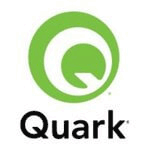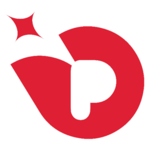Description

Ceros

QuarkXPress
Comprehensive Overview: Ceros vs QuarkXPress
Certainly! Both Ceros and QuarkXPress are tools used for content creation and publishing, but they cater to different segments of the market and have unique features and functionalities. Here's a detailed overview:
Ceros
a) Primary Functions and Target Markets:
- Primary Functions: Ceros is a cloud-based platform designed for creating interactive content without the need for traditional coding skills. It enables users to design engaging digital experiences such as interactive infographics, e-books, lookbooks, microsites, and more. It focuses heavily on user interaction and engagement.
- Target Markets: Ceros primarily targets marketers, designers, and creatives within agencies and enterprise-level companies who are looking to enhance their brand storytelling and user engagement through rich, interactive content.
b) Market Share and User Base:
- Ceros is a niche product with a strong presence among creative and marketing professionals focused on digital experiences. It doesn't have the same widespread market presence as some more traditional design tools but is recognized among high-end brand marketers and creative agencies for its distinctive capabilities.
c) Key Differentiating Factors:
- Interactivity: Ceros allows for robust interactive elements that are difficult to achieve with traditional desktop-based design tools.
- No Coding Required: It lowers barriers to creating complex digital content by eliminating the need for coding expertise.
- Cloud-Based Collaboration: As a cloud-based platform, Ceros facilitates easier collaboration and sharing among teams, which is particularly beneficial for remote work environments.
- Real-Time Updates and Analytics: Offers real-time updates on published content and detailed analytics on user engagement.
QuarkXPress
a) Primary Functions and Target Markets:
- Primary Functions: QuarkXPress is a desktop publishing software used for creating and editing complex page layouts in a WYSIWYG environment. It is widely used for publishing print media such as newspapers, magazines, and marketing collateral, as well as for digital publications.
- Target Markets: QuarkXPress serves graphic designers, publishers, and other professionals involved in the creation of print and digital media. It's popular among organizations that need reliable tools for print layout as well as digital publishing.
b) Market Share and User Base:
- QuarkXPress once dominated the desktop publishing market but now faces strong competition, notably from Adobe InDesign, which has become the industry standard in many areas. Quark still maintains a dedicated user base among traditional publishers and designers who prefer its approach and features.
c) Key Differentiating Factors:
- Desktop Publishing Heritage: QuarkXPress has a longstanding reputation for print layout, known for its precision and reliability in print media production.
- Non-Subscription Model: Unlike many modern software solutions that operate on a subscription basis, QuarkXPress is available as a perpetual license, appealing to users who prefer to avoid ongoing subscription fees.
- Integration and Scripting: QuarkXPress offers strong integration with design tools and supports scripting for automation and customization, which can be vital for high-volume publishing.
- Focused on Quality Output: It provides extensive tools for typography and architecture of long documents, ideal for users who need precise control over their layouts.
Comparison Summary:
- Primary Focus: Ceros excels at interactive digital content, while QuarkXPress is focused on traditional print and digital publication.
- Deployment: Ceros is cloud-based facilitating easy team collaboration, whereas QuarkXPress is a desktop program that provides robust offline working capabilities.
- Market Presence: Ceros is niche with specialized applications in digital marketing, while QuarkXPress, despite losing market share to Adobe InDesign, remains a staple in traditional publishing.
- Pricing Model: Ceros is typically subscription-based, reflecting its SaaS nature. QuarkXPress offers a one-time purchase model, catering to users who prefer a non-subscription setup.
Both tools are well-regarded within their respective niches, providing powerful functionalities tailored to the specific demands of their target user bases.
Contact Info

Year founded :
1999
Not Available
Not Available
Mexico
http://www.linkedin.com/company/desarrolloenproteccioncivilzonacentro

Year founded :
Not Available
Not Available
Not Available
Not Available
http://www.linkedin.com/company/quarkxpress
Feature Similarity Breakdown: Ceros, QuarkXPress
When comparing Ceros and QuarkXPress, there are several aspects to consider, from their core features and user interfaces to any unique elements that distinguish them. Here’s a breakdown:
a) Core Features in Common:
-
Design and Layout Tools:
- Both Ceros and QuarkXPress provide robust tools for creating elaborate page designs. They offer a wide variety of templates, typography options, and design elements, allowing users to craft visually appealing layouts.
-
Digital Publishing Capabilities:
- Both platforms support digital publishing. Ceros focuses on interactive content for web-based formats, while QuarkXPress allows users to create e-books, digital magazines, and other types of digital content.
-
Typography Features:
- Both have extensive text editing and typography options, supporting various fonts and textual styles to maintain design consistency.
-
Asset Management:
- Basic asset management capabilities, including libraries for storing and re-using design elements, are present in both tools.
-
Collaboration Features:
- Although the extent and nature of collaboration tools may vary, both platforms allow for some degree of teamwork, making it easier for teams to work on projects simultaneously.
b) User Interface Comparison:
-
Ceros:
- Ceros is entirely online, which gives it a modern and streamlined browser-based interface. It is designed to be intuitive, focusing on drag-and-drop functionality and ease of use for creating interactive content. Its interface is generally more accessible to those familiar with web-based design tools.
-
QuarkXPress:
- QuarkXPress's interface is more traditional and complex, suitable for power users accustomed to print and digital layout workflows. It resembles desktop publishing software with a comprehensive array of panels and menus, providing a professional feature set with a steeper learning curve compared to Ceros.
c) Unique Features:
- Ceros:
- Interactivity Focus: Ceros is known for its ability to create highly interactive and animated content without the need for coding. The platform is designed to produce engaging web experiences, making it unique in its focus on interactive web design.
- Web-Based Platform: Being a cloud-based application, Ceros can be accessed anywhere with an internet connection, allowing for seamless updates and remote collaboration.
- QuarkXPress:
- Desktop Publishing Expertise: QuarkXPress has deep roots in traditional desktop publishing, offering intricate control over print layouts, which is unmatched by web-focused tools like Ceros.
- Advanced Typography and Color Management: QuarkXPress provides advanced control over typography and color, catering to professionals in print media.
- Scriptability and Extensibility: Offers scripting and extensibility options through its QuarkXPress App Studio and various plugins, which can be crucial for users who need customized solutions.
In summary, while both Ceros and QuarkXPress offer robust design capabilities with some overlapping features, their fundamental focus and strengths differ significantly, catering to different segments of design needs. Ceros is more web and interactivity-focused, while QuarkXPress is deeply rooted in traditional and digital publishing.
Features

Interactive Content Creation
Analytics and Insights
Design Without Code
Collaboration Tools
Publishing and Sharing
Publishing Options

Typography
User Friendly
Collaboration
Design and Layout
Publishing and Output
Best Fit Use Cases: Ceros, QuarkXPress
Ceros and QuarkXPress are both powerful tools used for creating digital content, but they cater to different needs and industries. Here's a breakdown of their best-fit use cases:
Ceros
a) For what types of businesses or projects is Ceros the best choice?
-
Interactive Digital Content: Ceros is ideal for businesses focused on creating highly interactive and engaging digital content. This includes interactive infographics, digital magazines, e-books, landing pages, and immersive web experiences.
-
Marketing Agencies: Agencies that specialize in digital marketing and content strategy find Ceros beneficial for designing visually compelling and interactive content that can improve engagement and conversion rates.
-
Brand Storytelling: Brands focusing on storytelling to enhance their marketing strategies can leverage Ceros to create narratives that capture audience attention through interactive elements.
-
Event Promotion: Businesses promoting events can use Ceros to develop dynamic content such as interactive schedules, speaker profiles, and event highlights that encourage user interaction.
d) How does Ceros cater to different industry verticals or company sizes?
-
Industries: Ceros is particularly useful in industries like media and publishing, retail, fashion, education, and corporate marketing where storytelling and engagement are crucial.
-
Company Sizes: While Ceros can be used by companies of various sizes, it is typically favored by medium to large enterprises and creative agencies with dedicated design teams due to its comprehensive features for creating complex interactive content.
QuarkXPress
b) In what scenarios would QuarkXPress be the preferred option?
-
Print Design Professionals: QuarkXPress is preferred for projects focused on traditional print media, such as magazines, newspapers, brochures, reports, and books. It excels in page layout and typography, making it a staple for print designers.
-
Desktop Publishing: Ideal for publishers and graphic designers who need a reliable tool for desktop publishing tasks that require precision and high-quality output.
-
Long-form Document Creation: Scenarios involving the creation of extensive documents with complex formatting and layout requirements, such as academic publications or corporate reports, are well-suited for QuarkXPress.
-
Self-publishing Authors: Authors and small publishing houses that focus on self-publishing prefer QuarkXPress for its robust features in layout design and its relatively straightforward learning curve for print output.
d) How does QuarkXPress cater to different industry verticals or company sizes?
-
Industries: Its strengths in layout and typography make it suitable for industries like publishing, advertising, education, and corporate communications where precise print layout is essential.
-
Company Sizes: QuarkXPress is used by both small and large businesses. However, it's particularly appealing to small publishers and individuals due to its competitive pricing and the ability to produce professional-grade print materials without requiring large teams or budgets.
In summary, Ceros is best suited for businesses focusing on interactive digital content and engagement, making it a favorite among marketing agencies and brands with a storytelling focus. QuarkXPress, on the other hand, is designed for professionals focused on print media and desktop publishing, making it ideal for publishing houses and designers who specialize in creating print-ready materials. Each tool caters to different industries and business sizes based on their core strengths and feature sets.
Pricing

Pricing Not Available

Pricing Not Available
Metrics History
Metrics History
Comparing teamSize across companies
Conclusion & Final Verdict: Ceros vs QuarkXPress
Conclusion and Final Verdict for Ceros vs. QuarkXPress
When comparing Ceros and QuarkXPress, the choice largely depends on your specific needs, budget, and the kind of output you are focusing on, whether it be print, digital, or interactive content.
a) Which Product Offers the Best Overall Value?
Given their unique strengths, the best value product will depend on the particular context in which it will be used:
-
Ceros is ideal for interactive digital content creation, especially if you prioritize creating highly engaging and interactive online experiences without writing code. Its cloud-based nature allows for flexibility and collaboration, making it an excellent choice for modern marketing teams focused on web and multimedia projects.
-
QuarkXPress offers significant value for users who require sophisticated desktop publishing solutions, especially for print media. Its comprehensive design tools and powerful typesetting features make it a reliable choice for traditional publishing and designers who require precise publication quality.
Overall, if interactive and digital-first experiences are prioritized, Ceros provides more value due to its ease of use and focus on interactive content. Conversely, for print-heavy environments requiring extensive publishing capabilities, QuarkXPress offers better value.
b) Pros and Cons of Each Product
Ceros:
Pros:
- User-friendly platform tailored for creating interactive digital content.
- No coding required, allowing for rapid prototyping and deployment.
- Cloud-based, facilitating collaboration and access from anywhere.
- Rich analytics to track engagement.
Cons:
- Primarily focused on digital; not suited for traditional print media.
- May involve a steeper learning curve for those unfamiliar with digital and interactive content tools.
- Potentially higher costs if advanced features are needed.
QuarkXPress:
Pros:
- Comprehensive desktop publishing tools and strong typesetting capabilities.
- Excellent for print media and high-quality publication needs.
- One-time purchase model can be more affordable in the long run compared to subscription services.
Cons:
- Less focus on digital and interactive media, which might limit modern multimedia project capabilities.
- Traditional software might not support the same level of collaborative features as cloud-based solutions.
- Steeper learning curve for novices in graphic and layout design.
c) Recommendations for Users Choosing Between Ceros and QuarkXPress
-
Choose Ceros if you are primarily involved in creating web-based interactive content. Marketing teams focusing on digital campaigns, engaging multimedia presentations, and interactive content will find it particularly beneficial. It is also ideal for those looking for an easy-to-use platform without the need for technical expertise in coding.
-
Choose QuarkXPress if your primary need is robust desktop publishing, particularly tailored towards print production, complex layouts, and high-quality typesetting. It's suitable for graphic designers, publishing houses, and users who appreciate one-time payment models with strong print-focused capabilities.
Ultimately, assess your specific project requirements, the type of content you aim to create, and budgetary constraints to inform your decision. If your work demands versatility across both digital interactive and traditional print media, you might consider integrating both tools into your workflow for maximum reach and efficacy.
Add to compare
Add similar companies



